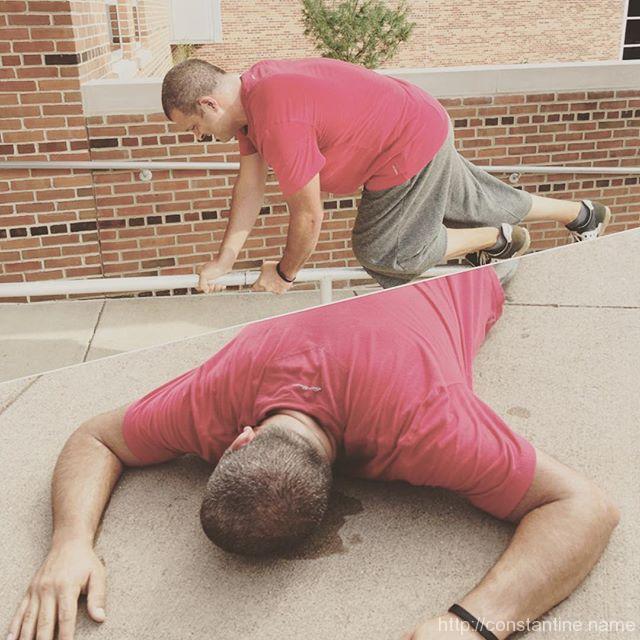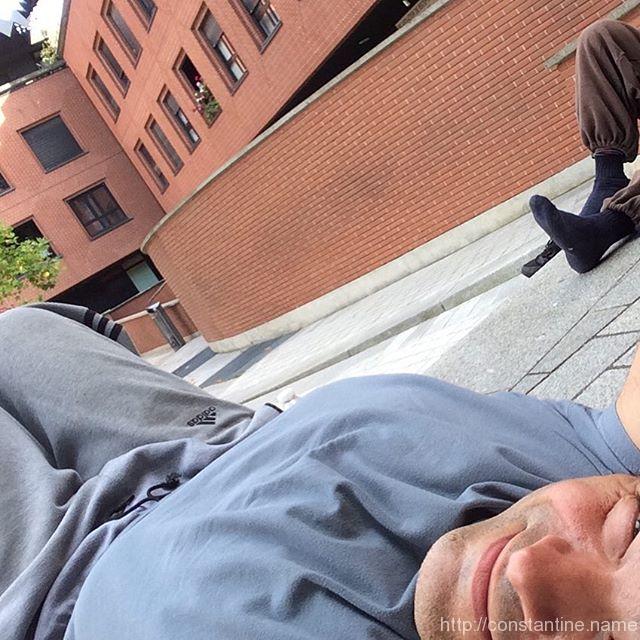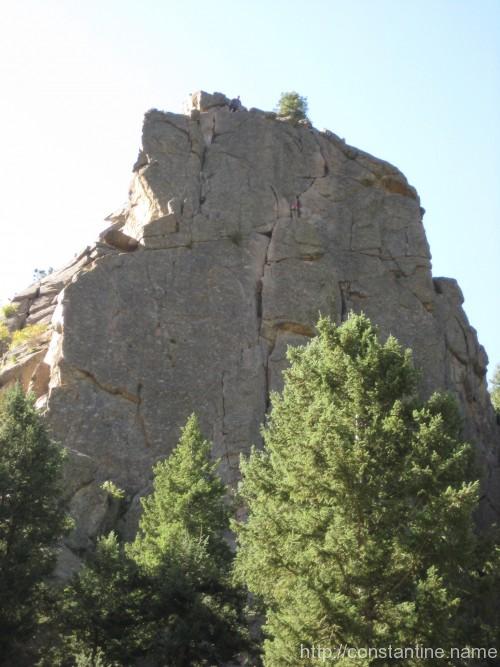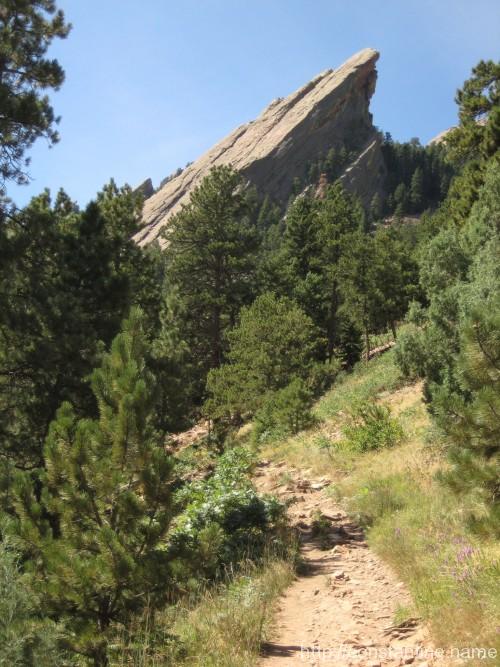
I was reminded we have access to our school district’s track. 8 laps with 100m dashes. Unfortunately after 3 dashes one achilles’ tendon said ‘stop that’. But still, if that best, 6’32”-mile pace is right… I’m stunned!
Reading time: About 5 minutes, 1100 words
Get 7 for Sunday in your inbox. → Subscribe here.
This issue is https://7forsunday.com/47
There is a time and place for maximum effort—yes, that’s a Deadpool reference—and there’s a time and place for stillness and calm. I’m fascinated by the relationship and interaction between physicality (as movement versus stillness) and mentality (as agitation versus calmness.) I’ve had transformational experiences at both extremes of physicality, with mental calmness. I do get mentally agitated. But I fear that too many people experience calmness far too rarely, possibly never.
This often means working more thoughtfully, and maybe even more slowly. Slow work is not unproductive work. What we lose in speed we more than make up for in deliberateness—as well as in undistracted attention, a critical factor of productivity.
~ Chris Bailey from, The productivity payoffs of a calm mind – Chris Bailey
slip:4ucite2.
Sometimes people ask me about Stoicism, and I suck at explaining it. Thinking and writing about calmness today, I’m struck that I should probably mention eudaimonia (eu̯-dai̯-mon-ía). Eudaimonia is a key value Stoicism advocates striving for.
[…] is a state of being and consciousness that is consistent with the active, effective activity of ideal agency and in general is characterized by the calm (equanimity; tranquility) that comes from the absence of further moral struggle and the absence of retrospective regret or prospective alarm about things outside one’s control, together with the confidence that comes from the effortless persistence of moral purpose.
~ Lawrence Becker from, A New Stoicism p91
2.5 millenia later… calmness, equanimity, tranquility?
ɕ
I’ve never seen any life transformation that didn’t begin with the person in question finally getting tired of their own bullshit.
~ Elizabeth Gilbert
slip:4a1252.
To create art we make choices. We do it with intent, seeking to make a change for certain people. When we find that our choices didn’t succeed, vulnerability with lots of personal angst is an available choice. The alternative is to learn from what didn’t resonate. Was it our choices in how we did the work, or did we bring this work to the wrong audience? You are not your work. Your work is a series of choices made with generous intent to cause something to happen. We can always learn to make better choices.
~ Seth Godin
slip:4a990.
I get the feeling that a lot of us are afraid of repeating ourselves – as if doing so demonstrates a lack of originality or a “less than” memory.
~ Jon Yuen from, «https://www.yuenjon.com/articles/2020/6/5/reminders»
Clearly (based on all these blog posts) I’m not afraid of repeating myself, and it feels in each moment as if I’m repeating myself. I see the same patterns in what interests me, and I think the same trains of thoughts. When I zoom farther out however, I see long, slow trends. The problem for me with repetition is that I find the salience of things tapers away towards zero. I’m [knowingly] within a few feet of a snake so rarely that my brain effortlessly applies maximum attention; but the number on the scale, not so much. What works for me is when the repetition is uncertain. I know I’ll read one of my quotes tomorrow, but it’ll be a random one—and I’ll remember it instantly as soon as I start reading it. Repetition repetition on to something else then… surprise! …more repetition!
ɕ
What would you like to be doing when you are overtaken by [disease and death]? For you surely will be, whatever you are doing. If you think you could be doing something better than this when you are overtaken, go and do it. For my own part, may death overtake me while I am engaged in nothing other than the care of my own faculty of choice, so that it may be unhindered, unrestrained, serene, and free.
~ Epictetus
slip:4a364.
The algific talus slopes where relic species persist are steep, built atop limestone—itself a relic from a time, half a billion years ago, when a shallow tropical sea covered what’s now the Driftless. The porous limestone is easily eroded by even slightly acidic water, including rain. As a result it holds numerous caves, sinkholes, cracks, and fissures. These networks of open spaces deep in the hillside were never compromised by glacial steamrollers, and are crucial for the “breathing”—slopes’ respiration.
~ Gemma Tarlach from, The Ice Age Persists in the Upper Midwest, Where the Hills Breathe – Atlas Obscura
slip:4uaaai12.
There seems to be something special about Iowa. Pockets of Ice Age biodiversity, and Vonnegut, must somehow mean something. Atlas Obscura started as an ecclectic collection of interesting points scattered about the Earth. It’s grown to—in my opinion—rival Wikipedia in the context of places. And then it started producing these place-specific, in-depth articles.
In the endless sea of click-baity, bullet-listed, double-spaced individual sentence fragments posing as a “post” on some social network… because, honestly, a paragraph block of text just scares the shit out of too many people, so we’ll just
space out the phrases
so our feeble minds understand
what the bite-sized thoughts are supposed to be.
I digress. Over decades, I’ve found sources on the Internet that are continual fonts of wonder and joy. I follow them using RSS, and I’m better off for it.
ɕ
St Burchardi church, in the eastern German city of Halberstadt, has played host to the performance since 5 September 02001 (the late composer’s 89th birthday), when it kicked off with 17 months of silence. Cage originally wrote ASLSP (As SLow aS Possible) in 01985. Its maiden performance by organist Gerd Zacher lasted 29 minutes, but Cage didn’t specify a maximum, so in accordance with the piece’s title, musical scholars and scholarly musicians since decided to stage a multi-century version, approximating the lifespan of an organ.
~ Stuart Candy from, As SLow aS Possible – Long Now
slip:4uloao1.
Ok, but exactly how slow are they playing it? …the halfway mark is in 02319.
02319!
Partly I’m sharing this because it’s just really cool. But also because I like the mission of the Long Now Foundation; I agree [with them] that one of the key ingredients to solving mankind’s challenges is for individuals to be good at thinking long-term. Evolution has given us brains that are crazy-good at short-term—particularly acute, fight/flight type threats real or perceived—problem solving. But to figure out a good course of action day to day that leads to own’s own flourishing over your life is really hard. To begin to mix in what’s good for humanity is whatever-is-larger-than-really level of hard.
ɕ
I’ve become increasingly interested in how culture is created within teams. One part is clearly modeling the behavior one wants to see. But I’ve been spending time thinking about how I talk to others about goals, challenges and setbacks. The more I look, the more I see I’m faced with so many interwoven elements: Communication—synchronous, asynchronous, mixed?; Feedback—positive, negative, immediate, delayed, public, private; Goal setting—team, individual, conservative, challenging, insane; Growth; Trust; Shared vision; Shared mission; Morals …
I find myself focusing almost entirely on communication. I try to spend as much time as possible explaining what I’m thinking and what my goals and visions are. At the sametime, the better I get at asking questions, the better I get at understanding what’s going on. There’s a balance. Too little conveying of direct instruction and concrete goals leaves some people struggling to grow. The opposite is also true; Too much and some people are stiffled.
“Curiouser and curiouser,” said Alice.
So what’s a question you ask your teammates that has led to surprising insights?
ɕ
The only practical and lasting solution to global violence is that we must raise the global level of consciousness. Only when that occurs will violence cease to be part of the human experience. Until that happens violence will always be with us.
~ Steve Pavlina from, Ask Steve – How to Resolve Global Conflicts – Steve Pavlina
slip:4usebo23.
This is a beautiful observation. Beautiful in the sense that it let’s me stop fretting over violence and wars, and frees me to think about things like: Can I help [this person / these people]?
ɕ

there was some “cat on a rail” practice, and some running (an entire football field of suicide lines) #100days #artdudeplacement
ɕ
What are the transformative possibilities of integrating Parkour into educational frameworks, and how can its values be preserved amidst sportification pressures?
Finn Berggren shares his thoughts on Parkour, explaining why he brought Parkour to Gerlev Idrætshøjskole in Denmark to replace the traditional gymnastics curriculum. We also discuss the “sportification” of Parkour and the Olympics, and he shares his story of the pivotal moment which solidified his decision to bring Parkour to Gerlev.
We built the first Parkour park in the world because it was a park designed to teach for pedagogical reasons and not just for doing, but also to learn how to do it and, at the same time, understand the philosophy behind Parkour.
~ Finn Berggren (7:00)
Finn Berggren shares his experiences as the principal of Gerlev Sports Academy, where he has transformed the institution’s approach to movement education by integrating Parkour. He recounts discovering Parkour through a television program and how its unstructured, innovative nature captivated him. His vision led to the creation of the world’s first pedagogical Parkour park, designed to teach movement and philosophy rather than competitive techniques. Finn discusses Gerlev’s evolution from a gymnastics-focused academy to a hub for diverse movement practices, including Parkour and street dance, emphasizing personal development and inclusivity.
Finn also reflects on the broader implications of sportification, warning against its potential to restrict the freedom and creativity inherent in Parkour. He advocates for preserving its unstructured, exploratory spirit and suggests using networks rather than rigid organizations to maintain its authenticity. Finn shares a personal story of witnessing children’s spontaneous engagement with movement, underscoring the importance of fun, challenge, and reflection in promoting physical activity and holistic development.
Takeaways
Fun as a foundation — Movement education thrives on enjoyment, which combats inactivity and encourages sustained engagement.
Challenges in Parkour — Emphasizes personal and mental challenges as vital components of growth.
Reflection in sport — Movement practices should promote reflection on societal and health impacts.
Parkour’s introduction at Gerlev — Brought new vitality and philosophy to the academy’s curriculum.
Development of the first Parkour park — A unique pedagogical space that merged practice and philosophy.
Sportification concerns — Over-structuring risks eroding the freedom and innovation central to Parkour.
Educational philosophy — Gerlev focuses on personal development over examinations, fostering individual responsibility.
Networking versus organizing — Networks are preferred to preserve Parkour’s values and resist rigid institutionalization.
Resources
Gerlev Sports Academy — The institution spearheading innovative movement education, including the world’s first Parkour park.
(Written with help from Chat-GPT.)
ɕ

This one’s for Jesse (who’s currently on an expidition sharing Parkour in South Africa) who asked for more photos. This is a shot of the Seine near dawn as we were walking to Notre Dame (in Paris, in case that’s not obvious.)
ɕ

‘cavalier’ leg-swing qm box-jump repeat repeat repeat *gasp* shady and not quite as hot, but eventually I had to lay down. Done for the day. All of tomorrow’s options apparently include ‘some running’. “Hello? US Embassy? …yes, I need asylum.” #stoopidLifeChoices #soakedInSweat #happyAsAclam
ɕ

In prep for going to Lumpy Ridge this week, we decided to go back into Boulder Canyon; climb on some granite, and work on some finger-jam cracks to push my grade. (Lumpy is notoriously stiff.)
Cob Rock was the obvious choice being so assessible.
This is another roadside park, Tyrolean over Boulder Creek, and up a short scramble. We started up a 5.6+ which was a real struggle for me; but I did it. Then we moved onto the main 5.7+ route up the center of the north face. Parts were straightforward, but one off-width crack, and a second jam crack really gave me trouble. Took my first real fall off the wall at one point, and even had to jug up the line to get around one section. (Involves tying special knots with slings and standing up on the sling to move up the rope. Total cheat, but when your completely stuck on a face, up is up!) Fortunately we had just been practicing this the previous day.
When we left, we discovered some local kids had rigged a slack line under the Tyrolean making for some unexpected fun on the exit!
ɕ

I had a Saturday to myself while Mike was working. I ran some errands, cleaned, organized etc in the hotel, dodged two hours of heavy rain, and then took a drive up Flagstaff road.
ɕ

(That’s what the guide books say.) After our climbing in Eldorado and Boulder canyons, we decided to go back and run up the third Flatiron.
We started from the now familiar Chatauqua parking lot, and tore up the approach. Mike’s favorite dig is, “hiking?! …you mean walking. That’s what we do to get to the climbing.”
We walked up about 500 vertical feet to the third Flatiron. Gorgeous trees, rubble fields, scree… and all the while this huge prominence of rock is sticking up into the sky. The face is about a 60 degree incline, with just little undulations, texture and some little ridges for hands and feet. From the top, it’s a triple rappel off the back side, then a “walk off” — which means you scramble doen the steepest, gnarliest terrain you could imgine ever “hiking” down.
Our climb on the first Flat was more epic; mostly because it was my first climb and it took seven pitches, mostly in the dark. The third was a fun, three pitch cruise. The left edge, bottom to top, is about 1,800 feet (if memory serves). On our ascent, we started about halfway up, on the right side. By the second pitch, you’re looking down on Boulder, and the raptors are cruising *below* you sailing the ridge lift.
ɕ


We’ve had an unbelievable run of weather. But last night and this morning it’s been raining. Wet rock equals no climbing.
This morning we’re down in Estes Park holed up in a coffe shop. Mmmmmmmmmmm latte and Internet.
ɕ
Now if you are going to win any battle you have to do one thing. You have to make the mind run the body. Never let the body tell the mind what to do. The body will always give up. It is always tired morning, noon, and night. But the body is never tired if the mind is not tired. When you were younger the mind could make you dance all night, and the body was never tired… You’ve always got to make the mind take over and keep going.
~ George S. Patton, Jr.
slip:4a75.

Cigar & 18yo single malt… Yeah, bring it Irene.
ɕ